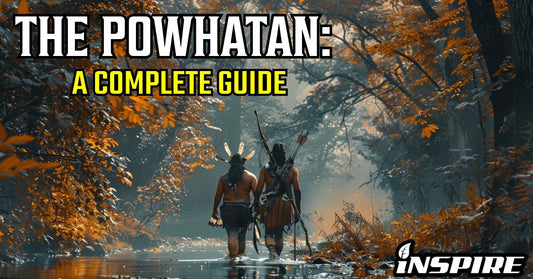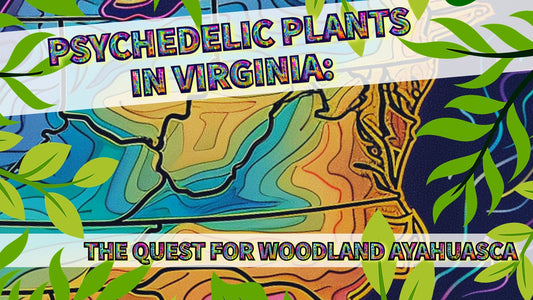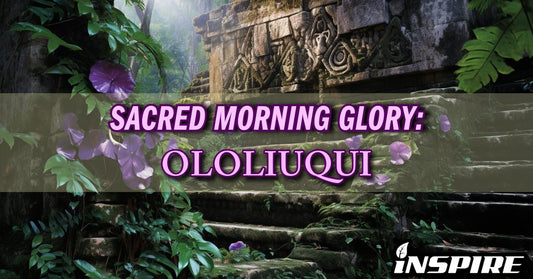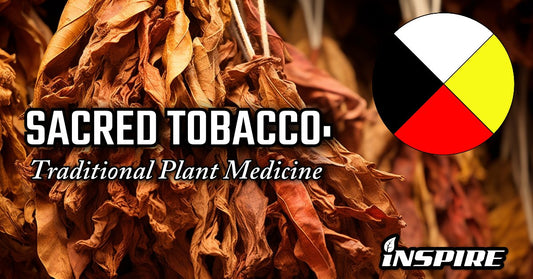Written By: Zach Champ
Connect with me on Instagram!

A HISTORICAL AND CULTURAL ODYSSEY
When Christopher Columbus sailed across the Atlantic Ocean and arrived in the Bahamas, he believed he had reached the other side of the World.
As he set out to meet with the local inhabitants, he was greeted by the Arawak Indians who gifted him with an offering of dried leaves. These dried leaves were Tobacco!

The history of tobacco use stretches back millennia, having been cultivated by various indigenous cultures across the Americas.
Revered by Native American tribes for generations, tobacco has long been appreciated for its profound spiritual and medicinal properties.
When the Europeans discovered the Americas and consequently Tobacco, they too became ardent supporters of the sacred smoke.

The first documented use of tobacco in the Old World began in the 16th century with French ambassador Jean Nicot.
Nicot was an ambassador to Portugal where he met with Portuguese conquistadors and traders. Through spending time and interacting with them he learned about the tobacco which had been brought over to the Iberian Peninsula from across the Atlantic ocean.
Upon returning home, Nicot brought dried snuff and tobacco seeds which he presented to the King of France in the royal court.
Virginia and the Tobacco trade, “A land wholly built upon smoke!”
The oldest pipes found intact in Virginia date back to the 17th century. They include pieces made by both local native tribes and British colonists. Most of these pipes were found in the Jamestown and surrounding settlements.

It was the English explorer John Rolfe (the man who married Pocahontas) who first brought imported Spanish seeds of Nicotiana tabacum from South America and the West Indies which were better for commercial cultivation, thus kick-starting Virginia’s colonial tobacco trade.
Tobacco was so essential to the growing economy that it was commonly used to pay taxes during colonial Virginia. It is even recorded that in 1612, twelve Virginia colonists paid for the passage of several women from England by paying a fee of 120 pounds of tobacco each.
Tobacco wasn’t just a staple crop, it was a form of currency!
It is no under-statement that Tobacco single handedly saved the British colony and made it profitable!

Our beloved colonial Virginia was in all reality a narco-state driven by the regulated commercial tobacco trade and its reliance on slave labor.
This pissed off a lot of important political figures and members of the Church back in England who thought the reliance on such a commodity was sinful, or worse a threat to the existing status quo of colonial reliance on the British crown and their authority.

THE CONFLUENCE OF CULTURE AND SCIENCE
In Native American cultures, the reverence for tobacco is deeply interwoven with spirituality, echoing the harmonious relationship between humans, nature, and the divine. Scientific research corroborates these beliefs, highlighting tobacco's potential therapeutic properties.

Recent studies suggest that tobacco compounds may hold the key to unlocking treatments for neurodegenerative diseases and even certain types of cancer!

TOBACCO'S PSYCHOACTIVE AND CHEMICAL PROPERTIES
Tobacco's allure is rooted in its psychoactive properties, notably attributed to the presence of nicotine. The consumption of tobacco invokes a state of heightened awareness, both calming and invigorating. This delicate balance of effects has been harnessed by various tribes in rituals, ceremonies, and healing practices for centuries.

The main psychoactive compound found in tobacco is Nicotine. Nicotine is an alkaloid, a type of naturally occurring plant-based chemical that is commonly found in plants in the Nightshade family.

Plants are incapable of running away, and they lack immune systems which makes them susceptible to predation and disease.
Plants produce nicotine in the leaves and berries as a toxic form of natural defense against predators like birds and insects. Nicotine is even used as a natural insecticide in farming and agriculture.
For humans, nicotine acts as a stimulant by increasing messaging between the CNS and human body through the release of epinephrine and adrenaline.

The more you smoke tobacco or nicotine products, the more nicotine receptors which develop within your brain. These receptors demonstrate dopaminergic properties and constantly flood the brain with dopamine. This creates feelings of craving and withdrawal, which result in nicotine being highly addictive.
Is Tobacco medicinal? We all know that smoking cigarettes causes cancer, however this is not due to the Tobacco leaves themselves, but the hundreds of additive chemicals that are by law regulated and required to be added to cigarettes including flammable materials like cadmium and hexamine, and preservatives like formaldehyde. Cigarettes even contain ingredients like Methanol which is the main component of rocket fuel. Cigarettes are disgusting!

But nicotine alone is not the same thing as a cigarette, and we must carefully discern the true medicinal value of this naturally occurring compound.
The elders knew there was medicine in Tobacco, and this goes beyond the spiritual and ritualistic, they knew there were true healing properties to the plant!
Benefits and Side-Effects of Nicotine and Tobacco Consumption
When you consume nicotine, it becomes absorbed into the bloodstream where it travels to the adrenal glands, releasing adrenaline. This sudden release of adrenaline increases blood pressure, breathing, and heart rate creating a sense of euphoria and pleasure.

This makes nicotine a potent anti-depressant drug, which contributes to its subsequent widespread frequent use. However, nicotine itself, while addicting, is no more dangerous than the caffeine in a cup of coffee.
Research has also shown that nicotine is a powerful anti-inflammatory drug and can possibly be used to help alleviate the symptoms of certain diseases such as Alzheimer's disease, Parkinson’s disease, and Crohn's disease.
In fact, pharmaceutical companies use nicotine as a starting point for the synthesis of new anti-inflammatory compounds.

NATIVE AMERICAN HERITAGE:
POWHATAN, CHEROKEE, AND ALGONQUIN PERSPECTIVES
Traditionally Native Americans in Virginia used Nicotiana rustica, which is known for its dark leaf and bitter taste.

For the Powhatan, tobacco symbolized unity and sacred offerings, facilitating communication between humans and spirits. The Powhatan used tobacco as a sacrament for invoking their sacred deities.
During severe thunderstorms, medicine men would paddle on canoes to the center of rivers or lakes and throw tobacco as an offering to appease the spirits.
Cherokee tribes held tobacco in high esteem as an integral component of ceremonial rituals, invoking protection and guidance from ancestors. The art of sharing tobacco signifies that we are willing to listen to someone and accept what they have to say without judgment.
Algonquin Indians revered tobacco as a gift from the Great Spirit, using it to express gratitude and foster connection with the cosmos. Algonquin people believe that sacred tobacco was one of the first plants given by the creator. It is traditionally smoked out of a peace pipe in the left hand where it is closest to the heart.

REDISCOVERING TOBACCO'S TRUE ESSENCE
Tobacco is ultimately a plant that is often misconstrued and demonized… Yet it was historically essential to the growth of our country, and it holds an important place in the heart of Native American cultures, especially as a conduit to the spiritual realm and as a source of healing.
It is imperative that we honor and rekindle this sacred relationship, allowing tobacco to transcend its contemporary associations and regain its rightful position as a revered and spiritual herb!
May the knowledge of the ancestors live forever!








